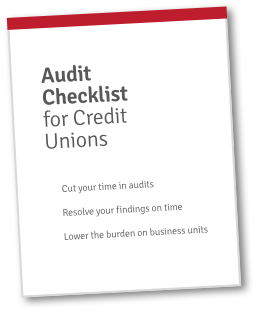The world is full of best practices tips. You probably know the best way to brush your teeth. You definitely know the best way to tie your shoes. And, if you’ve been reading this blog, there’s a good chance you know best practices for credit union exams and audits.
But best practices are just that: best practices. They tell you what you should do, which is all well and good…
Yet they don’t tell you what you should avoid.
Here are a couple of “worst practices” to avoid during credit union exams.
Never Do These Two Things During Your Credit Union Exams from Brad Powell on Vimeo.
Don’t Deliver Questionable Documents
If you’re not 100% confident in a document, a deliverable, or other information, don’t turn it in. The old adage “measure twice, cut once” fits here. You should know that whatever you give your credit union examiner, it should be accurate and definitive.
So, why would you turn in something that you’re not confident in?
If you’re under a deadline or if rush your process, you might not have time to vet or perfect your deliverables. But handing in something you’re not confident in may undermine the confidence of your examiner.
Let’s say you turn something in. Then, a week, or maybe a few weeks or more pass by. You need to change something on it. When you turn in your revised work, your examiner might start to wonder:
-
- Why did they need to change something?
- Did they deliver something they weren’t confident in?
- Did they make a mistake? Should I look for other mistakes?
- Is there something else going on that I should investigate further?
Those are not the kinds of things you want credit union examiners to wonder. It doesn’t matter why you had to revise something—the examiner’s confidence in your credit union is already eroding.
Do you really want to place that kind of doubt in their mind? Do you want that extra scrutiny?
Don’t Hide Things from Your Examiner
Okay, yeah—it sounds a little weird even saying it. If it feels weird just writing it out, then that’s a pretty telling sign. Don’t hide things from your examiner!
Well, it’s not like you’re hiding things. Not exactly. No, it’s more like you’re hoping that something won’t get noticed. It’s not as bad, but it’s basically the same thing. Maybe slightly better, but not by much.
If you’re going to deliver something that you know will ruffle some feathers, own it. If you deliver something that you know might violate their standards, acknowledge it. If you know something will raise scrutiny in some way, just do it anyway.
Your best bet is to be up front and forthcoming about any potential issues. For starters, it will give you and your examiner more time to address it (if anything needs addressing).
More importantly, being forthcoming about potential issues sets a certain precedent. If you deliberately keeping attention away from a potential problem, your examiner will begin to expect that kind of behavior. They may start looking for issues any time you appear to downplay or drag out processes. Essentially, they’ll expect that they can’t trust you.
Conversely, if you address potential issues head on, you’ll build a different set of expectations. They’ll trust that you’ll disclose any possible sticking points.
Basically, they’ll expect you to work with them, not against them. And that’s a good thing.

FREE: Audit Checklist for Credit Unions
4 key principles and 9 questions to jumpstart your audit planning. From leading credit unions.Additional Resources
Subscribe to our blog to learn more of the ins and outs of credit union exams. If you do, you’ll be the first in line to read our upcoming piece about worst practices for credit union audits.
Follow the links below if subscribing to the blog sounds like too much. Or if you’re already subscribed. Or if you forgot what hyperlinks do and you want a little refresher.
HOW MUCH DOES A CREDIT UNION AUDIT COST?
TWO UNCOMMON REGULATORY EXAM TIPS FOR AN EXTRA SMOOTH AUDIT





